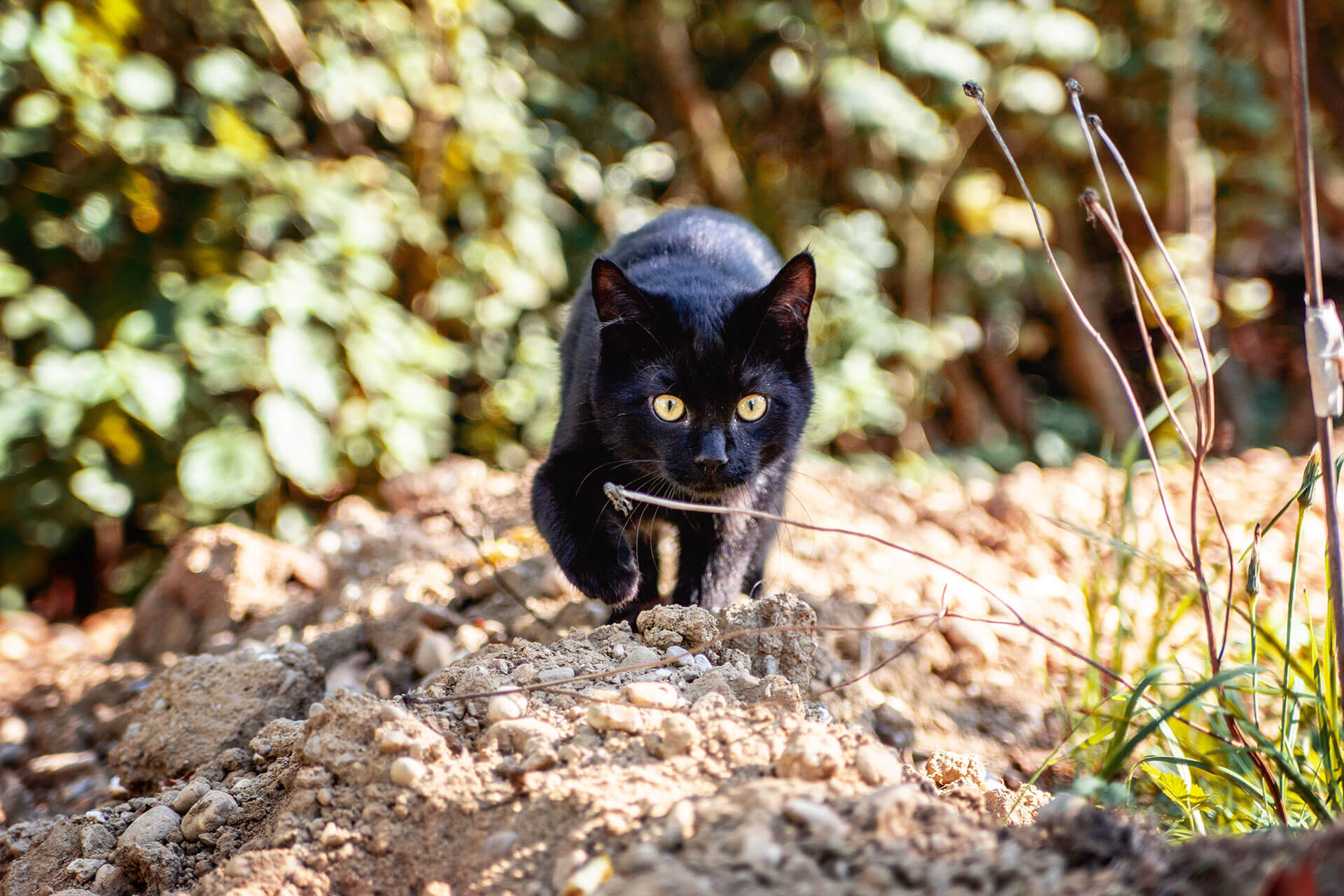Why Do Cats Run Away? 10 Reasons + How To Stop ‘Em
Boredom, curiosity, stress, instincts - there's no end to reasons why cats run away. So here are 10 of them & how you can best keep your wandering buddy safe and sound by following their every step.
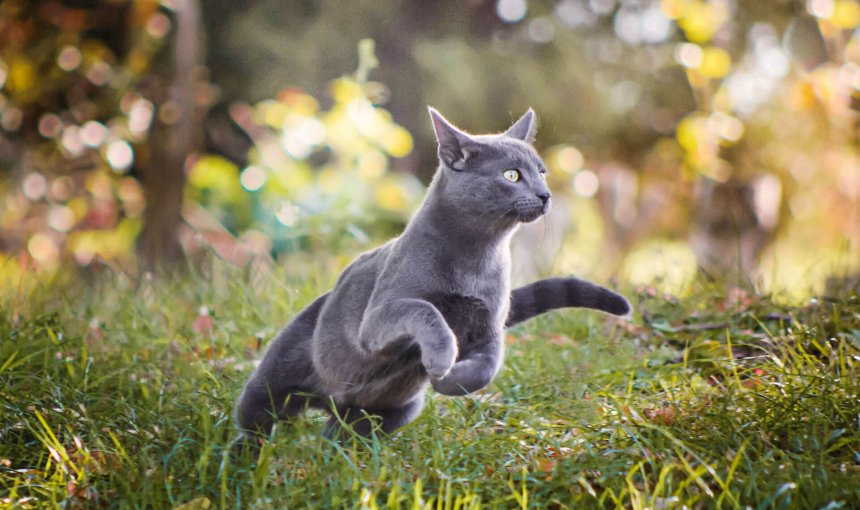
Why do cats run away? You feed them, play with them, offer them nothing but a loving home – and you’re still likely to deal with your cat running away at some point or the other. So whether they’re missing for only hours or days at a time, most cat parents can relate to this experience.
Now while cats have a very good sense of direction, it doesn’t mean that your cat will necessarily always return home. And by taking the time to understand the reasons why your cat runs away, you can help both protect your cat – and your peace of mind.
So let’s talk about the top 10 answers to the question: why do cats run away, as well as cover what you can do to prevent your cat from running away the next time. (Like following their every step in real-time.)
- 10 reasons why cats run away
- Potential reasons why cats go missing – and don’t come back
- How missing cats find their way back home
- Why a GPS tracker means 100% peace of mind – for you & your cat
- Know everywhere your cat goes
- How to stop a cat from running off
- How to find a lost cat
- Wrapping up: Why do cats run away ?
- Know everywhere your cat goes
10 reasons why cats run away
1. Reproductive instinct
The first reason why cats run away is their reproductive instinct. Which is strong in female cats in heat as well as unneutered male cats.
As long as you have an unneutered male cat, he’s more likely to spend his time outdoors. (Searching for purrfect mating partners.) And when they do, there’s no fence high enough to stand in their way.
If they don’t find a suitable partner in the area? An unneutered cat may travel farther from home to do the deed.
⚠️ The mating instinct in cats could lead to your feline buddy going missing for days at a time. Or even getting into dangerous situations if they get lost, stuck, or injured far away from home.

So your first step to a cat running away due to being in heat: consider getting them spayed or neutered.
- This can help reduce their mating drive – so need to worry about them escaping from home to find a partner.
- Neutering can also help reduce aggression in male cats.
- In some places, neutering your cat is mandatory by law. So check your country’s regulations, in order to make sure your feline is safe.
💡 Another option for keeping your lovesick cats safe? Track their every step in real-time.
By attaching a GPS cat tracker to their collar, you can follow their movements live – and across an unlimited range. Which can help you intervene before they sneak off into your neighbor’s yard. (You know…to meet and greet the females in heat.)
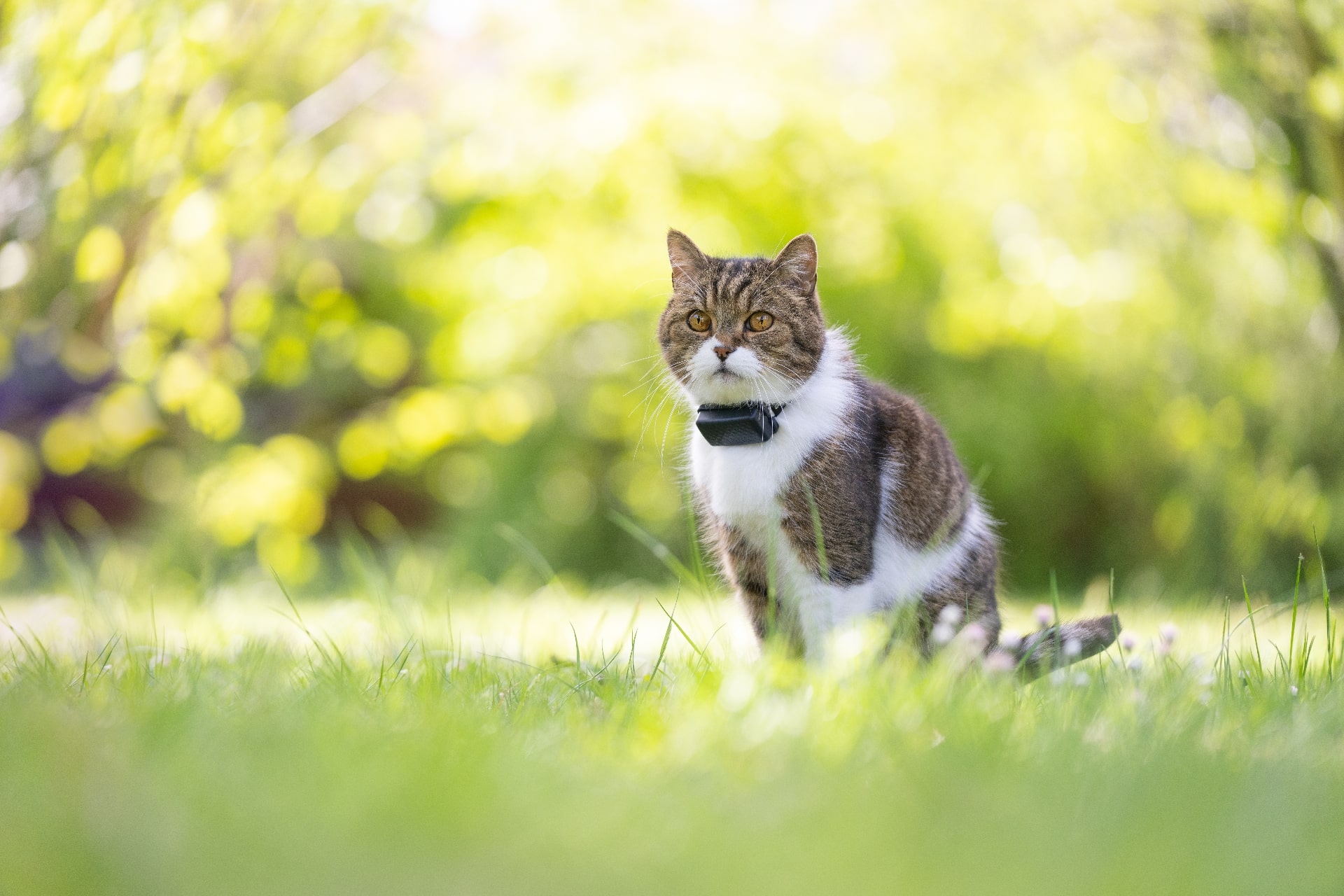

2. Stress
Stress is another common reason why cats run away. Cats are creatures of habit – they don’t like changes in the household or to their routine. Which might include:
- Moving the furniture around
- Welcoming a new pet or family member
- Home renovations
- Or even just loud noises
All of these things and more can cause stress and anxiety in your kitty and may cause them to seek refuge elsewhere.
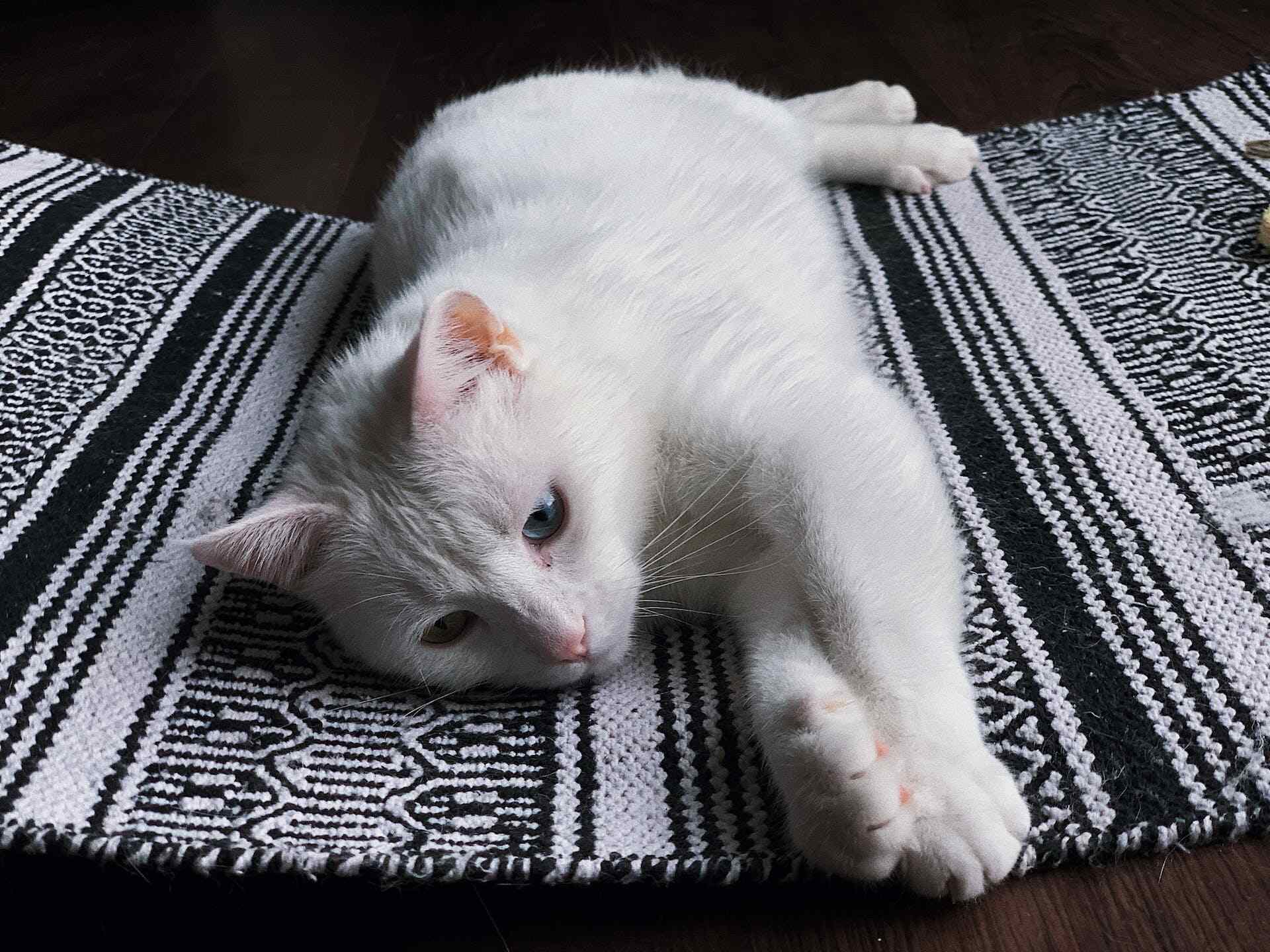
To help ease your cat’s stress in the face of big changes, check out these related articles:
- How to make a dog and a cat get along well in only 7 steps
- Relocating with your kitty: How to reduce your cat’s stress
- How to introduce a cat to a dog: Tips & recommendations
- Cat dementia – signs, treatment & outlook
- Signs Of Separation Anxiety In Cats & How To Treat It
3. Hunting instinct or prey drive in cats
Another major reason why your cat is likely to run away from home? Their natural and deeply ingrained hunting instincts. Our domesticated feline friends descend from a long line of wild cats – who are expert hunters. And for most of their evolutionary history, cats big and small hunt as a means to feed themselves. (And their kittens.)
Unfortunately, this strong, biological instinct doesn’t just disappear when we started feeding our cats Fancy Feast. (You might see it when your cat drops a dead mouse or bird at your feet. They’re actually trying to “teach” you how to hunt!)
So regardless of how well-fed your cat is, they will most likely enjoy a good hunt. (It’s just part of their cat-nature.) So don’t be surprised if your outdoor cat roams away from home on the hunt for some irresistible prey.
💡 But what if your cat ventures too far while on the hunt? Simple. Just set up a Virtual Fence with your trusty Tractive GPS.

With which you can set up a “safe zone” and “no go zones” – like that one patch of woodland they like to venture in to hunt down mice.
Now, the minute your cat tries to sneak past a safe zone (like your backyard), you get an esape alert on your phone – so you can intervene and get them back to safety.

4. Neglect or abandonment
Neglect and abandonment are two other potential reasons why your cat may not come home. These might be because:
- They’re spending more time at home alone than in your company
- They’re not getting enough food, water, or anything else that they need to survive and live a good life
- Your home has been neglected
- You haven’t been able to give your cat the care they need
As a result, your cat may seek shelter, love and care elsewhere.

So make sure to check out our guide on how to care for a new kitten or cat to make sure you’re properly providing for your feline furbaby. If you have outdoor cats, be sure to provide them with a warm place to stay in winter.
Read more: Outdoor Cat Care In Winter: How To Keep Yours Safe
5. Territory
In general, a cat’s territory is the area where they spend their time – inside your home, backyard, maybe further. If your cat feels comfortable there, they will likely try to expand their territory by checking out the greater surrounding.
- They may also want to claim your neighbor’s yard, or the sunny spot with all those birds down the street.
- Cats are territorial, therefore they may try to defend their territory against other cats in the area.
So reason #3 why cats run away is: they’re claiming their kingdom. (And showing other cats who’s boss.)
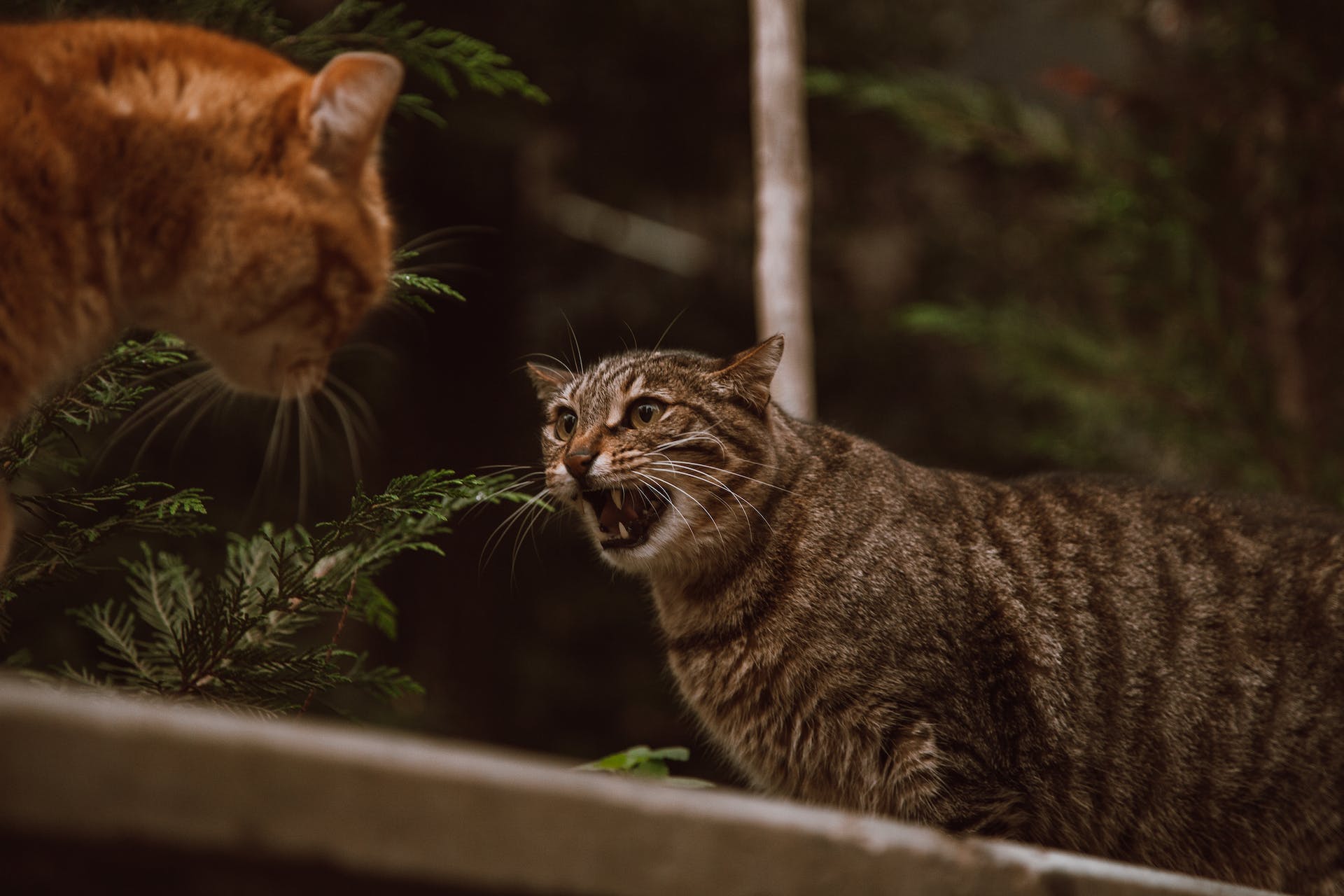
The downside is that the bigger the cat’s territory, the more likely they are to come into contact with other cats.
- Which can put them at risk of fighting and getting injured in a cat fight.
- Moreover, they’re more likely to be exposed to dangerous diseases, such as feline AIDS.
Also, neighboring cats may try to claim their territory in your backyard, which could easily cause your own kitty to try and find another safer yard. If your cat feels threatened in their own territory by another cat, they may not be around that much anymore.
💡Your Tractive device actually helps you map out your cat’s territory! Which can help you figure out your cat’s favorite haunts, past routes, and spots they like to hang out in best.
So you can also prevent them from venturing somewhere dangerous.
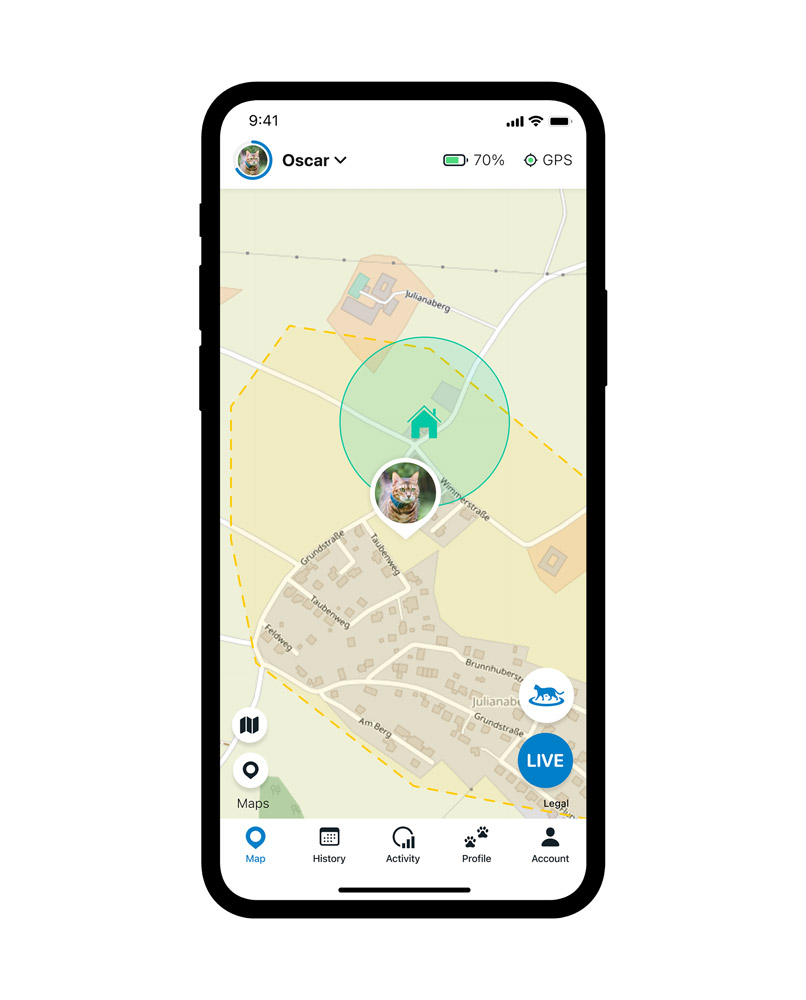

6. Fear
Another common reason for a missing cat is, well, a scaredy-cat. If your cat gets scared off by something, their natural fear response may send them into fight, flight, or freeze mode.
- Fight: your cat might hiss, flatten their ears, and bat at a threat. (Like another cat, pet, or person.)
- Flight: your cat will run for the hills.
- Freeze: your cat will stand still, probably hiding somewhere nearby, but they may be too scared to come out of hiding or make a sound.
Much like dogs, cats do have noise anxiety as well.1 So with “noisy” festivals involving fireworks, like New Year’s or the 4th of July, you might find it more likely your feline friend is MIA.
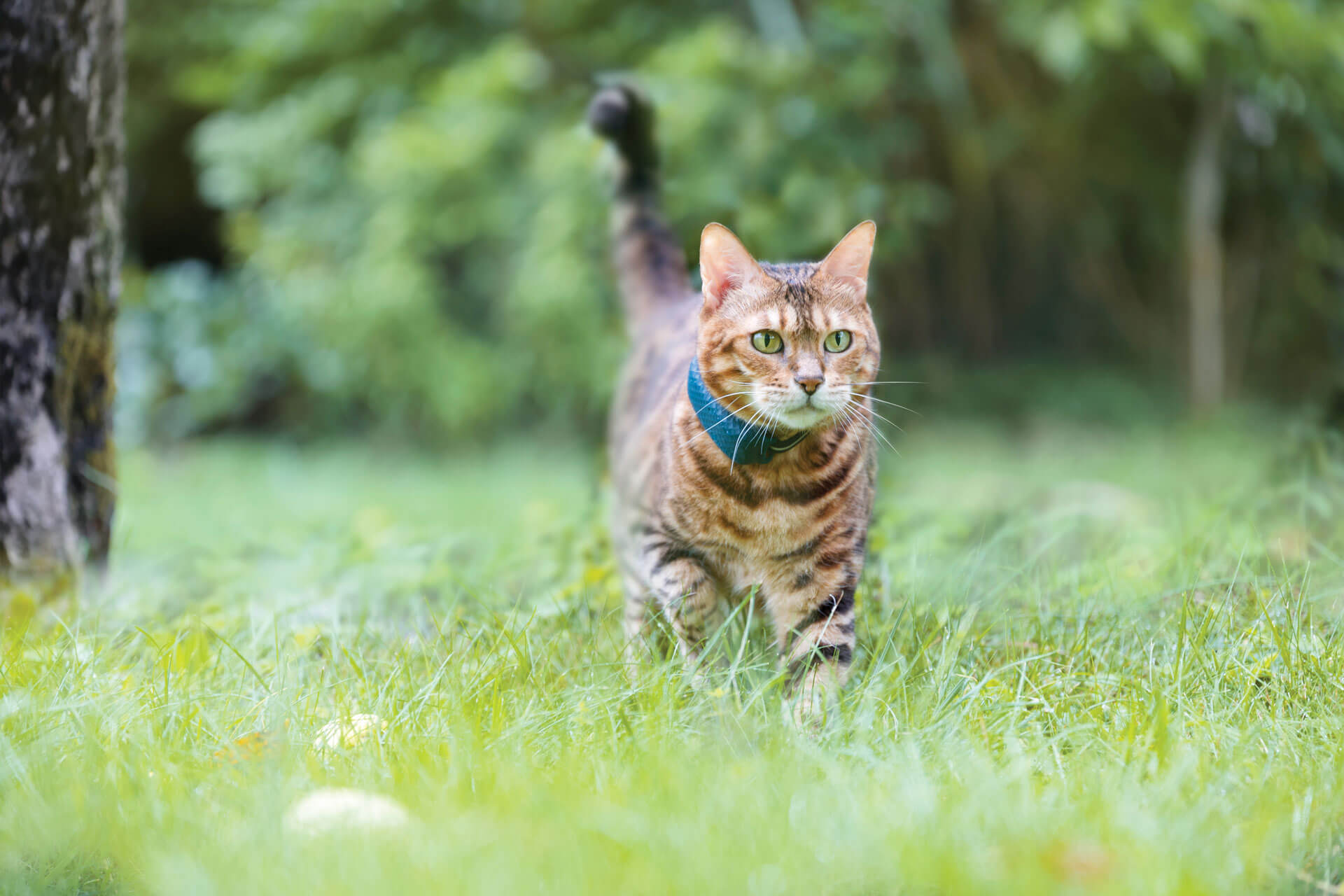
7. Cheating on you
Another likely explanation for why you can’t find your cat is that they are cheating on you with the neighbor down the road. Other friendly humans may have taken a liking to your kitty and begun feeding them, or even letting them inside their house regularly.
Why might this cause your cat to run away? Well, it’s likely your neighbors have tastier treats, or more interesting toys than you do at home. It’s not uncommon for a cat to have a ‘backup home’, especially if they’re being spoiled.

So step one to prevent your neighbors from mistakenly adopting your cat: put a safety collar with an ID tag on your cat. This way, it’s clear that they belong to your family and don’t get mysteriously ‘adopted’.
We’d also recommend getting your cat a microchip ID. Microchips work like a permanent ID tag for dogs and cats. (Plus, since they get implanted into your cat’s shoulder blades, they’re less likely to fall off like just an ID tag.) So if they wander away in a public space, a helpful stranger can take them to a vet or a local shelter. Where they can scan your cat’s microchip, find your contact details, and inform you they’ve found your missing cat.
💡Tractive CAT MINI trackers come equipped with a weight-adjustable Rogz safety collar. Perfect for cats of all shapes, sizes, and surrounding preferences.
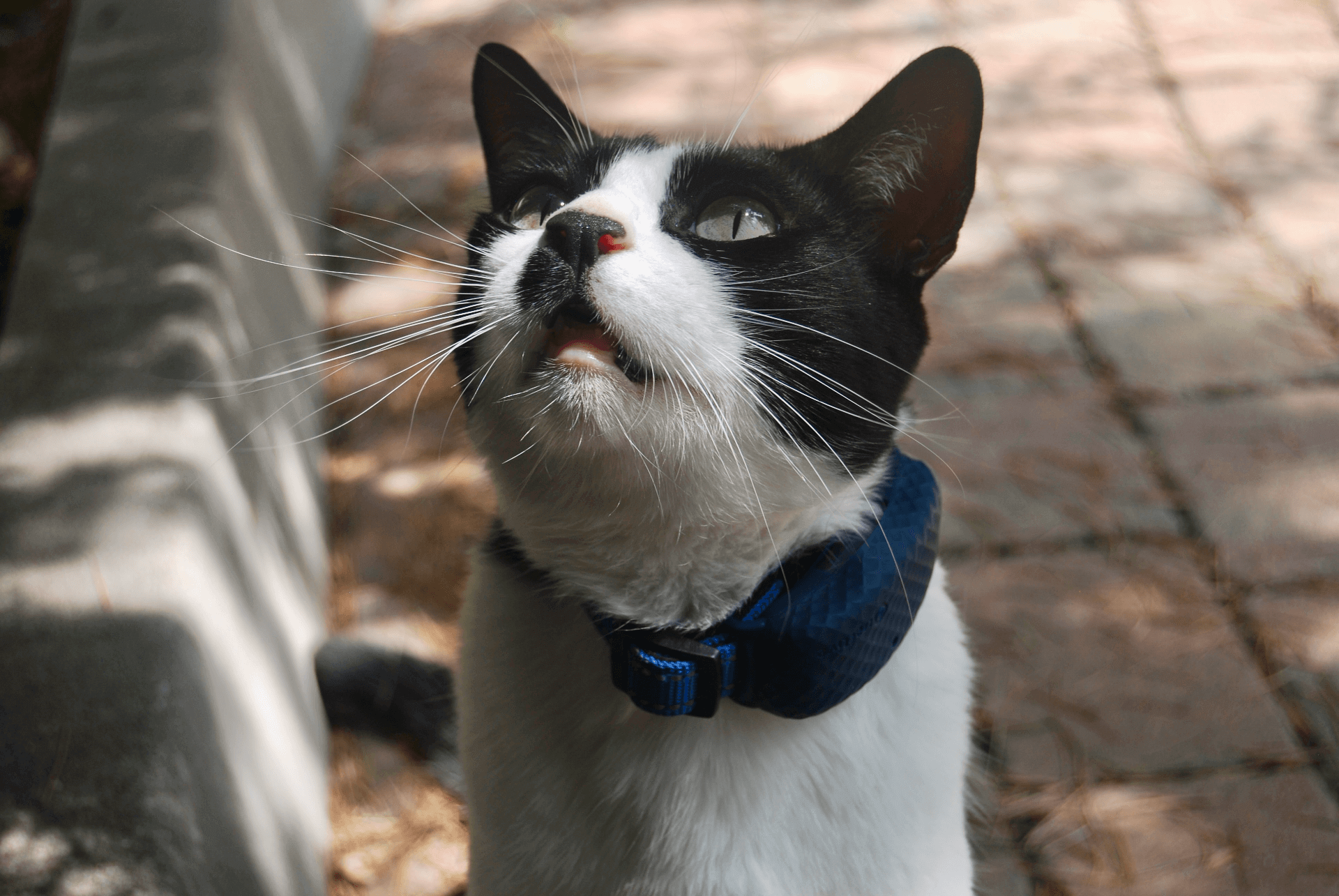

8. Pregnant cat giving birth
Speaking of cats in heat, if your cat successfully fulfills their mating instinct, you may have a pregnant cat on your hands. And it’s typical for pregnant cats to hide. Pregnant cats will often seek out a secluded, private and safe location to bring their kittens into the world.
Read more:

⚠️ So if you have a stressful household, for example with dogs or children running around, don’t be surprised if your pregnant feline is nowhere to be found.
But in case you’re worried and want to find your cat, here are three quick and easy ways you can locate them indoors with Tractive’s Bluetooth, Augmented Reality, and Light & Sound features.
9. Sickness
Next, another natural cause of cats running away is sickness. When cats are ill, they prefer to go someplace isolated, concealed and quiet to recuperate on their own without any disturbances. And they may decide that the most peaceful spot for them is not on your property.
Read more: How To Tell If Your Cat Is Sick: Signs Your Feline Friend Isn’t Feeling Well

Hopefully, your cat will get well soon and be back home in no time. However that’s not always the case. Cats who are sick or injured are more vulnerable in the outdoors alone. They could catch the feline flu, for example, or become an easy target for a local predator. If your cat is on the verge of dying, they may wonder off in search of solitude and not be able to make it home again.
💡One of the first signs your cat might be feeling poorly? A drop in their activity levels. Which you can monitor with your Tractive’s Activity Tracking features. Helping you prevent your cat from running away, catch on to a sickness early on – and avoid an expensive vet bill down the line.


10. Curiosity
Finally, cats often run away just because they are inquisitive creatures who love to explore and follow their curiosities. Maybe your cat likes chasing the butterflies or insects in summer; maybe they got distracted by a friendly squirrel or neighbor kid.
Especially if there is something enticing nearby, your cat is likely to roam away from home for hours to up to days. Even just nice weather is enough to cause them to leave your lap in search of some excitement.
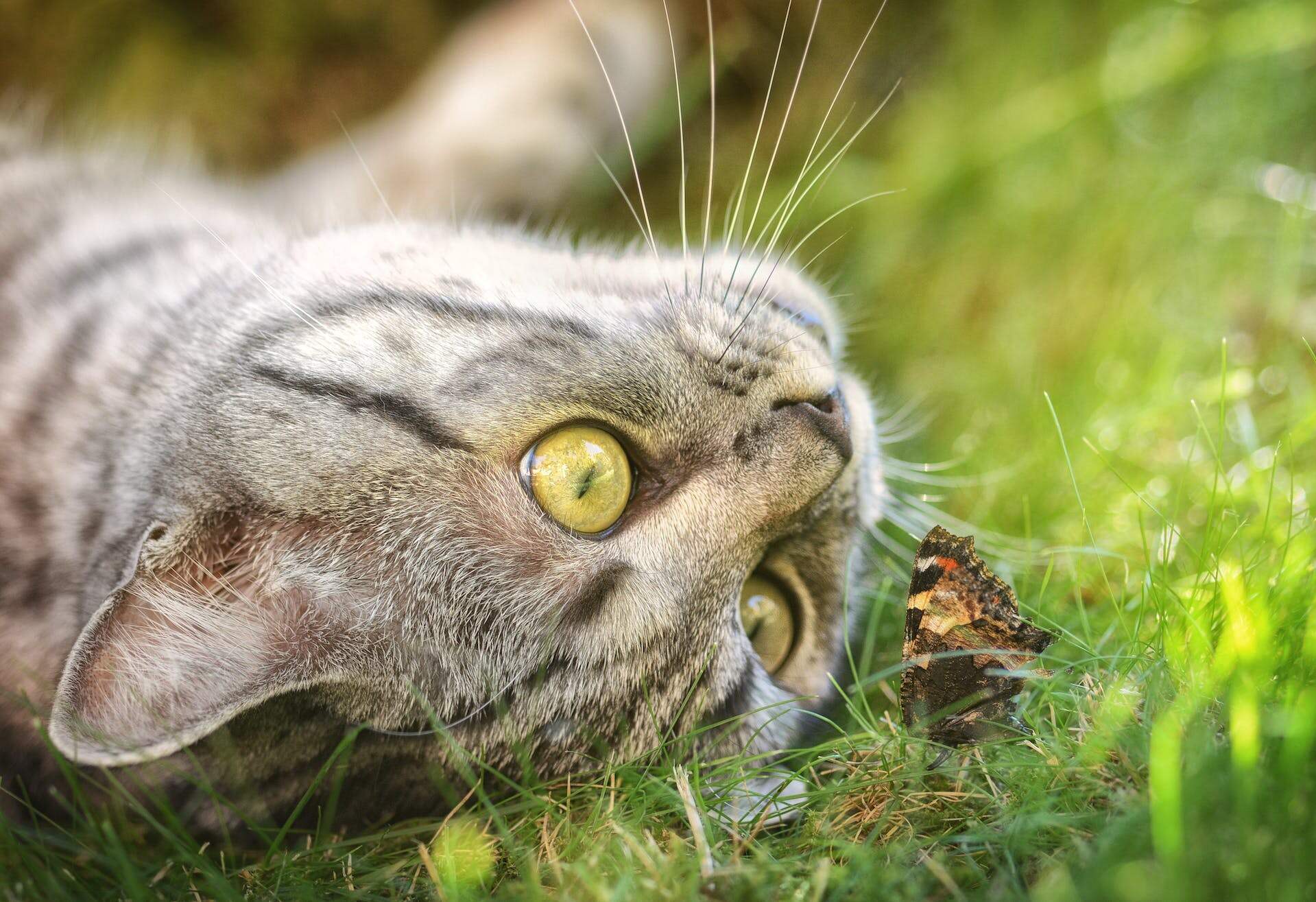
So if you have a curious, exploring adventure cat, know that it’s 100% normal. But of course, there are certain safety measures we can take to protect our outdoor feline friends. This is especially important, because your cat may face certain dangers when they’ve gone missing out of your sight.
Because while they’re trying to discover new places, either out of distraction or curiosity, many cats get stuck in various narrow places, such as fences, tubs, garages, and even cars! Or they might end up wandering a bit too far from safety when stalking prey.

Potential reasons why cats go missing – and don’t come back
When cats run away, it’s often just for a few minutes, hours, or days at a time. Most likely they will return. According to studies, cats usually don’t travel further than a one mile radius of their home. When cats are missing for 2-3 days or less, they were probably just exploring their territory, seeking a mate, or hunting a prey.
Read more: How Long Do Cats Go Missing For? And Why?

However, sometimes, a cat goes missing and doesn’t return – they run away and disappear forever. Considering this, it’s important to be aware of some other potential reasons why your missing cat may not come back.
Natural predators
Cats may encounter predators and become prey themselves to these larger animals, so keep your cat indoors if you have dangerous natural predators of cats in your area. These may include cougars, mountain lions, wolves, coyotes, snakes, eagles, hawks and owls, depending on where you live. 🦅
Disease, injury or death
Outdoor cats are more susceptible to sickness and injury than indoor cats. That could come from disease-carrying ticks, other cats, toxic plants or mushrooms, predators, or other natural or man-made dangers.
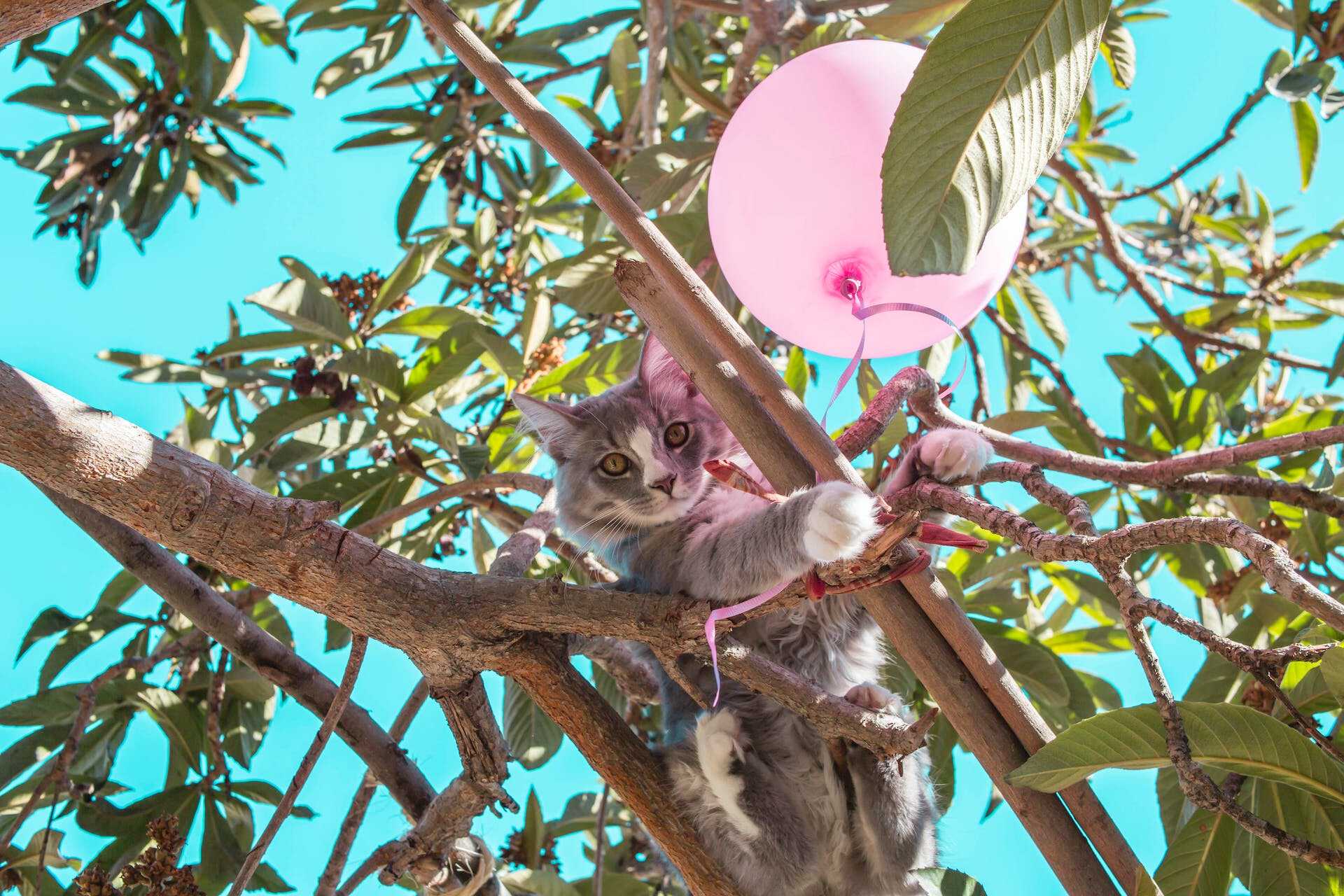
This is why it’s always a good idea to know where your cat is at all times.
Animal control
Another reason why your cat may go missing and not come back is if animal control picks them up. Maybe someone thought they were a stray, and called to have them picked up off the streets.
So if you do have a lost cat:
- Make sure you call your local animal control services to see if anyone has picked up your feline.
- Likewise you can call veterinarian offices and animals shelters to see if your cat somehow ended up there.
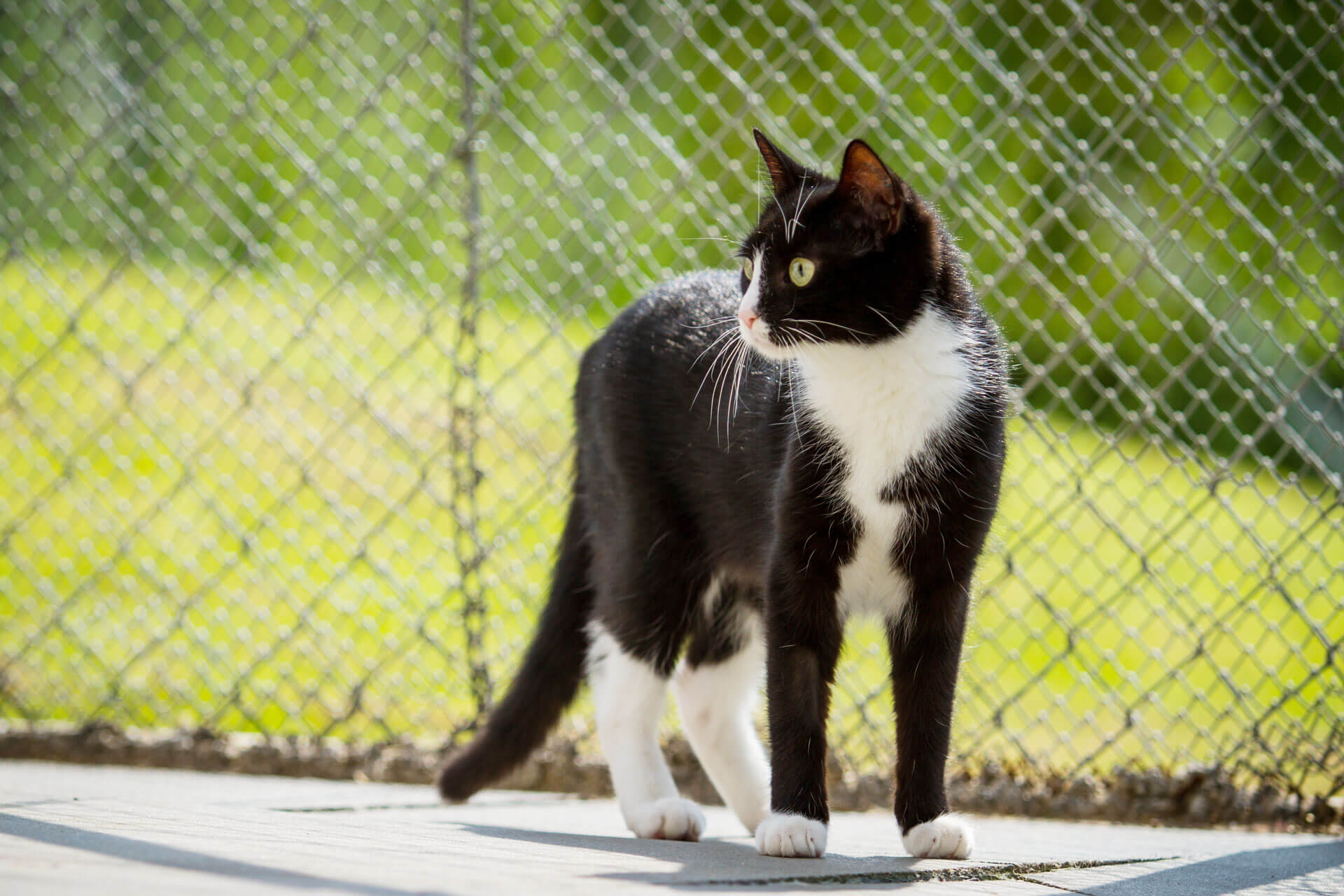
⚠️ Most animal shelters hold rescued cats for around 2-7 days, if they don’t have a microchip or any other identifiable details. After which, they might be rehomed – or worse, euthanized. So make sure your cat has at least a microchip and collar ID tag equipped.
Theft
Unfortunately, dognapping – or pet kidnapping – is on the rise and our feline friends may be affected by pet theft too. Professional cat thieves would most likely target expensive cat breeds, so they can sell the cat and make a profit. Therefore you should keep an extra close eye on your cat if they fall into one of those breeds.
Cat theft can also happen if someone sees your cat roaming the neighborhood and decides they want to make your furbaby their new pet. But if your cat has a microchip, you have proof that you’re the rightful parent.
However, microchips alone can’t protect against a pet thief. It can be difficult to find your stolen cat if you have no way to track them in real time. Which is where a GPS cat tracker can be a lifesaver.

Protect Your Cat With Tractive
Intentional loss
Unfortunately, another reason why pets sometimes go missing is intentional loss. People who don’t wish our furry friends well may decide to dump the cat somewhere or even harm a cat.
So if your feline is missing it may be a good idea to ask yourself if anyone you know may have done something to intentionally get rid of the cat. (We hope this isn’t the case!)
Picked up by a moving vehicle
Another common reason why wandering cats may go missing for a longer period of time is if they are accidentally picked up by a moving vehicle. Maybe your cat crawled under the hood of a car, or inside the delivery guy’s van.
This happened to our friend Kiwi the cat, who had an adventure in the back of a van before eventually being reunited with their family again. Thanks to Tractive GPS, Kiwi’s parents could see where he and bring him home safely. Stacy shared the story with us in her Trustpilot review:
“Our cat Kiwi jumped into the back of a van (little to the drivers knowledge).“

“After spotting on my phone that she had left her ‘virtual fence’ I noticed that she was moving quickly and along roads.
She ended up travelling down the motorway, 15 miles away.
With the Tractive App, I found her in a shopping centre car park in the back of the fish van. Without Tractive, who knows where Kiwi would be now…”
How missing cats find their way back home
It’s not all bad news when it comes to cats running away. It turns out, our feline friends may be experts at finding their way back home. Here are some factors which can help your feline friend return home on their own:
Homing instinct
A cat’s homing behavior is their ability to navigate back to a familiar location through unfamiliar areas. While it is not completely understood, it may have something to do with cats’ keen sensitivity to the Earth’s geomagnetic field, which helps them to figure out their way home2.
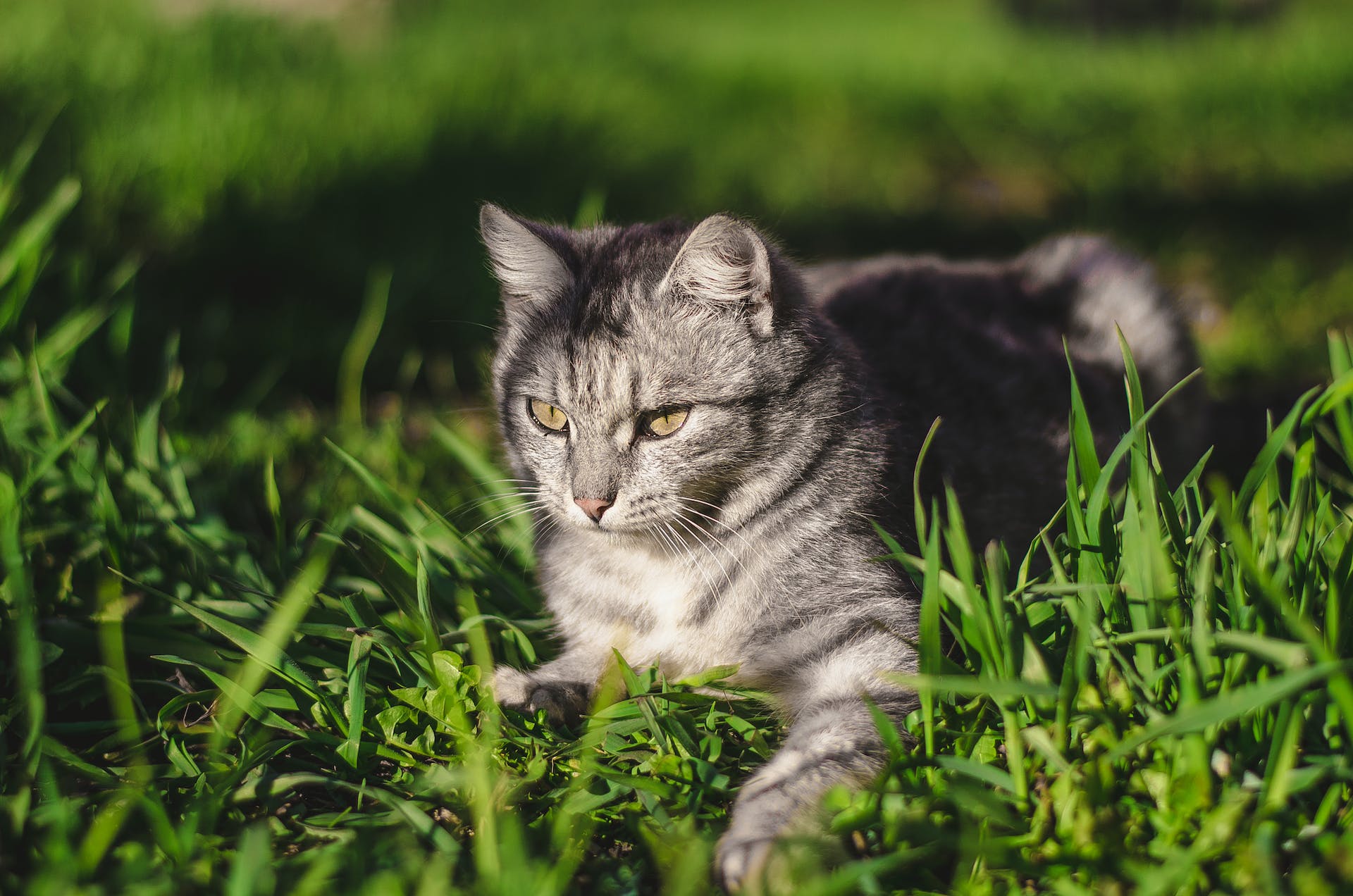
However keep in mind that not all cats are equally skilled at homing; outdoor cats are more likely to have this ability than indoor cats.
Cat sense of direction
What helps make their homing instinct strong is cats’ extraordinary sense of direction. Using their advanced senses of smell, hearing and vision, as well as sensing the magnetic fields, cats have been known to find their way home from miles away. The presence of iron in cats’ ears and skin may act as a natural compass.
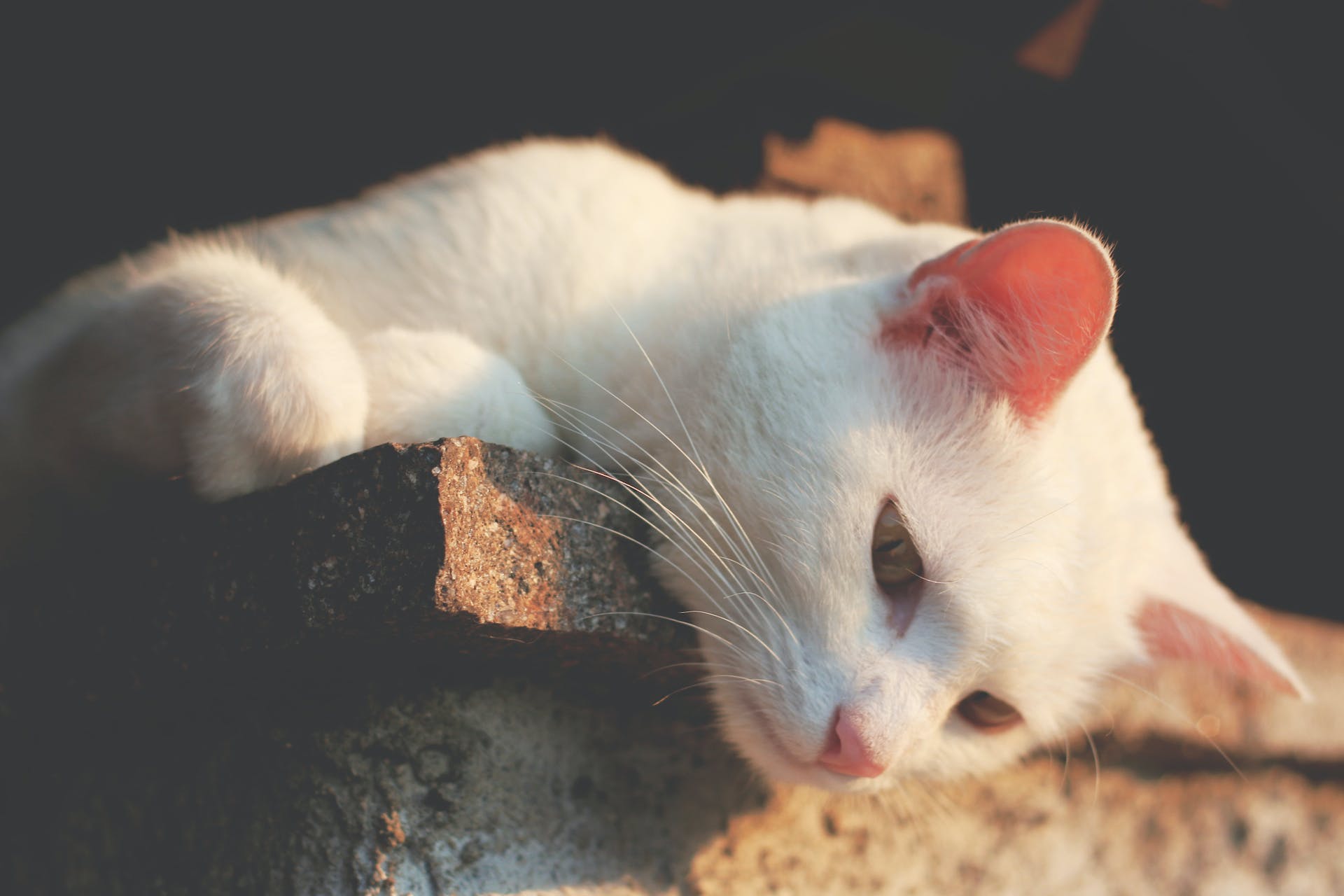
Psi trailing
In some remarkable cases, cats have been able to find their way back to a loved one, through unfamiliar territory to a destination previously unknown to the feline. This is called psi-trailing and there is not much of a scientific explanation for it – but some cat parents stories indicate that cats may have some way of tracking their parents and homing in on them, regardless of where they go.
These are three good reasons to remain hopeful that you will be reunited with your kitty again, even if they go missing. However, the further your cat roams and the longer they are missing, the less likely they are to be found. 😾
Why a GPS tracker means 100% peace of mind – for you & your cat
With a GPS tracker attached to your cat’s collar, you’ll always know where your feline friend is. Plus, you can intervene immediately if you notice they may be in trouble. All this with just a tap on the LIVE button to follow their every step in real-time.
Afraid your cat might not respond so well to a tracking collar? No worries. Tractive’s CAT MINI GPS tracker includes a breakaway collar that immediately comes apart in case of pressure. (Plus, you can easily re-attach it.)

Know everywhere your cat goes
See where they are in real-time, no matter how far they go. Get alerts if they roam too far home. Find out where they’ve been and discover their favorite spots. Let others track with you.
Read more: Cat Collar Training: How to Train Your Cat to Wear a Collar
How to stop a cat from running off
Luckily, there are many things a cat parent can do to prevent a cat from running away from home. Even if you have the most adventurous outdoor cat, you have options to keep your feline safe and closeby. Here are some of the best tips for stopping a cat from running away:
- Get them fixed: spay or neuter your cat to prevent them from running off. Many cat parents are able to worry less about their male cat going missing, once they’ve neutered their cat.
- Keep your cat inside whenever possible, especially during cold months or at high prey activity times, like dawn and dusk.
- Cat-friendly relocation: make your move a cat-friendly one.
- Create a catio aka outdoor cat enclosure so your cat can enjoy the outdoors without the risk of getting lost.
- Microchip your cat and make sure they have ID tags, so others people will know that your cat already has a family.
- Entertain and keep your cat stimulated at home with healthy activities & play.
- Limit your cat’s roaming space by setting up a Tractive GPS Virtual Fence: you’ll be notified if your cat crosses the boundary, and you can bring them inside.

- Minimize possible escape routes by securing your home, catio, or backyard to make it cat-proof.
- Track everywhere your cat goes with a GPS cat tracker.
- Train kitty to come home using positive reinforcement.
- Be mindful of your cat during stressful changes at home – and give them the extra care they need.
- Provide them with everything they need to thrive at home (food, water, toys, activity, love and healthy stimulation).
- Use a harness and leash on walks with your cat outside.
How to find a lost cat
It’s no fun when our precious feline leaves our side and gets lost – we can feel helpless, scared, and worried about what might happen to our poor missing cat. Will they return home on their own? How long do cats go missing for?
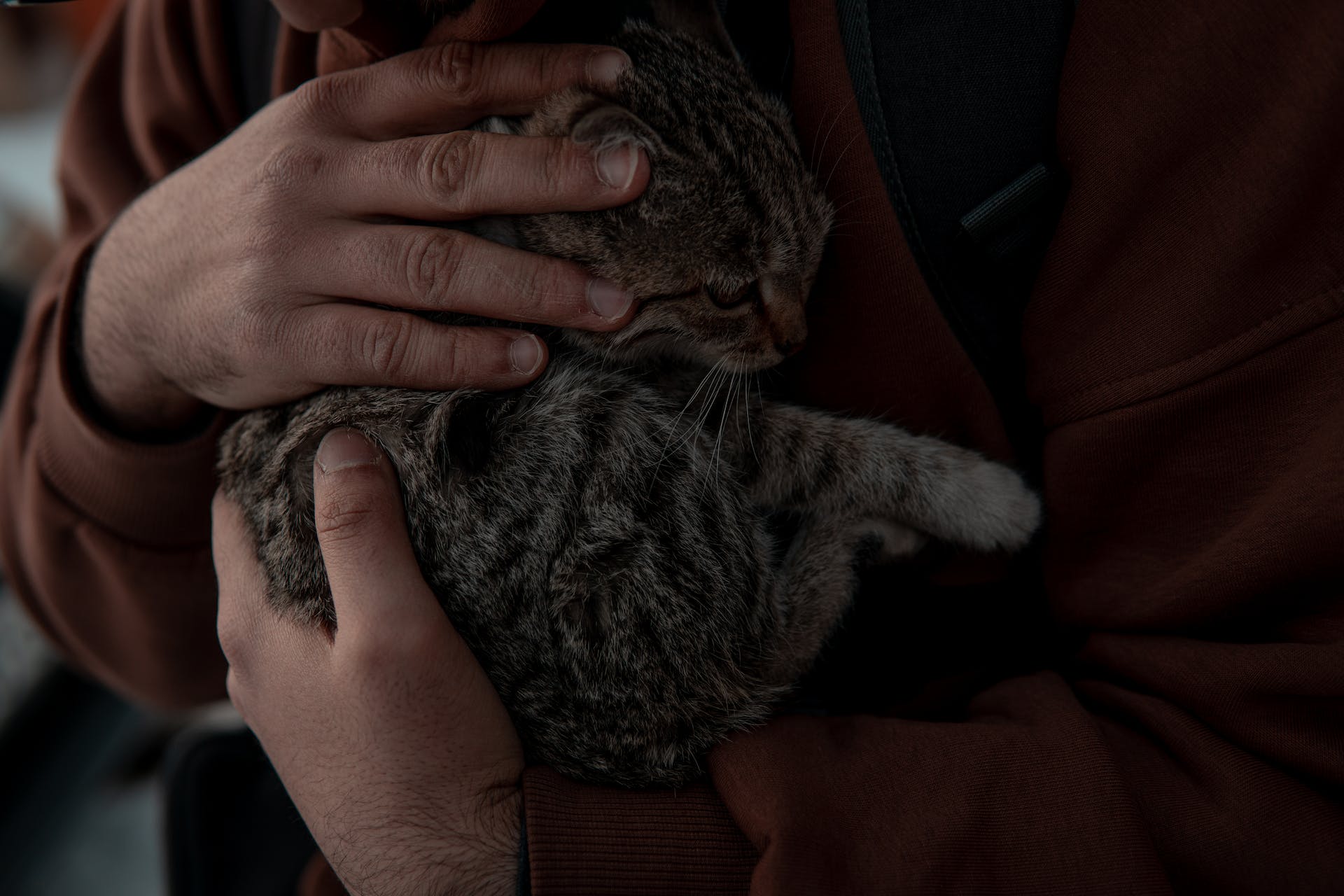
Instead of wandering and waiting, it’s important to take action as soon as possible to bring your lost cat home again. Get all our tips for finding a lost cat, including a free lost pet poster download here:
How to Find a Lost Cat – and Stop Them From Going Missing Again
Wrapping up: Why do cats run away?
In this article, we covered the 10 main reasons why cats run away. They are:
- Reproduction
- Hunting
- Exploring territory
- Visiting neighbors
- Pregnancy
- Stress
- Neglect
- Fear
- Sickness
- Curiosity
Additionally, cats may go missing and never come back back in cases where predators, disease and injury, animal control, theft, intentional loss, or other accidents happened.
Luckily, cats have several ways of finding their way back home if all is fine and they don’t get stuck, trapped, or injured. But to maximize your chances of finding a lost cat, you need to start looking right away.
You can prevent a cat from running away by getting them fixed, keeping your cat inside, using a catio, attaching a GPS cat tracker to your cat’s collar, and by providing them with a loving, nurturing and safe home atmosphere in which they can thrive.


Know everywhere your cat goes
See where they are in real-time, no matter how far they go. Get alerts if they roam too far home. Find out where they’ve been and discover their favorite spots. Let others track with you.
For more info on if why cats run away and if they come back home, check out the video below:
And if you’ve found this post helpful, share it with a fellow cat parent – and let’s help build a safer world for our feline friends together.
